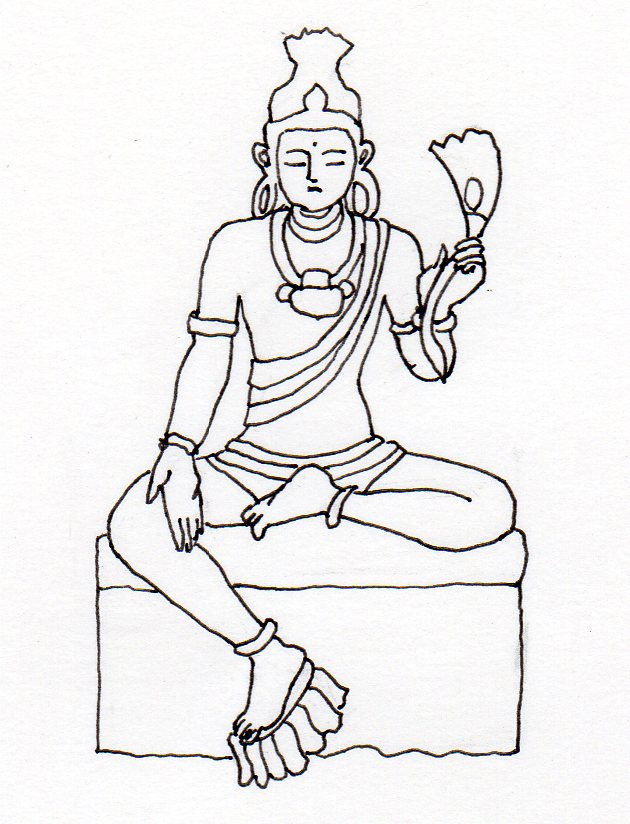|
||
 |
||
 @
@@
(C)2001 Japanese Architecture and Art Net Users System.@No reproduction or republication without written permission.
fÚÌeLXgEÊ^ECXgÈÇASÄÌRec̳f¡»E]ÚðֶܷB
|
||||||
| @ | ||||||
| yuugeza@VY¿ | ||||||
| KEY WORD :@art history / sculptures | ||||||
| @ | ||||||
| Also read yuugiza (Sk: lalitasana). A seated position for a Buddhist image, usually a bodhisattva *bosatsu ìF. The figure is often seated on a lotus base *rengeza @ØÀ, with the left leg bent and its foot pushed out over the edge of the base and the right leg pendant. The foot of the pendant leg often rests on its own small lotus pedestal. This is a relaxed posture comparable to *rinnouza Ö¤¿. Although there is no exact translation referring to this seated posture in sources that were translated into Chinese before the 9c, the posture is commonly used for images in India, Southeast Asia and Tibet. In regard to Buddhist images from China, Korea and Japan, this form of one leg pendant with one leg folded in front of the body is referred to as *hanka fuza ¼æææå¿. The Kokuuzou Bosatsu ó ìF from Gakuanji zÀ in Nara is an 8c Japanese example. The hanka shiyui ¼æævÒ position, a pose of meditation with the right leg crossed over the pendant left leg is most common variation of hanka fuza. | ||||||
| @ | ||||||
 @ @ |
||||||
@ |
||||||
| REFERENCES: | ||||||
| @ | ||||||
| EXTERNAL LINKS: | ||||||
| @@ | ||||||
| NOTES: | ||||||
| @ | ||||||
(C)2001 Japanese Architecture and Art Net Users System.@No reproduction or republication without written permission. fÚÌeLXgEÊ^ECXgÈÇASÄÌRec̳f¡»E]ÚðֶܷB |
||||||
| @ |